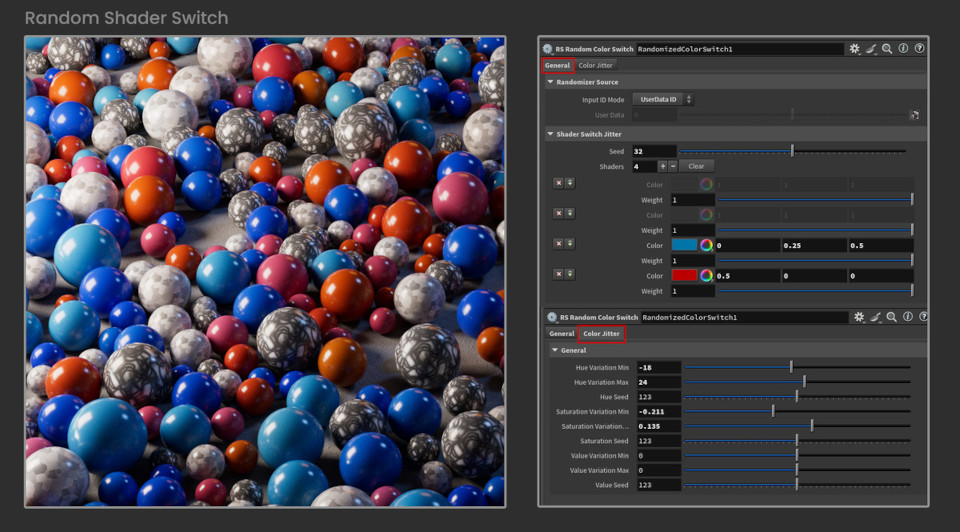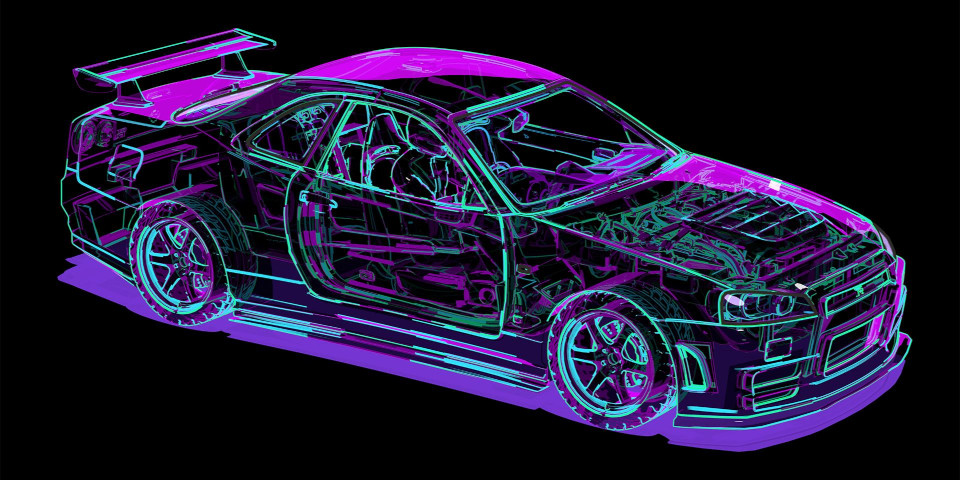Maxon releases Redshift 2025.2
Maxon has released Redshift 2025.2, the latest version of the GPU renderer.
The update adds new nodes for varying materials in a scene, new non-photorealistic rendering options, and support for GPU denoising across NVIDIA, AMD and Apple Silicon hardware.
For VFX and animation work, studios get a USD Command Line Rendering tool for running Redshift on a render farm without other DCC software installed.

New nodes for randomly varying materials across scene objects
New features in Redshift 2025.2 include Random Color Switch and Random Material Switch.
The nodes vary the materials applied to a set of objects within a 3D scene, with Random Color Switch randomizing colors and textures, and Random Material randomizing entire materials.
Both come with Color Jitter options for additional random variation.
You can see examples of their output in the release thread on the Redshift forum, which showcase their potential applications for motion graphics work.

Updates to non-photorealistic rendering
Redshift’s new non-photorealistic rendering toolset gets another update, adding a new set of Backfacing controls to the Contours shader.
They make it possible to render separate contour outlines for the back-facing edges of an object, helping to create blueprint and X-ray render effects.
It is also now possible to control more precisely how contours are drawn around overlapping and intersecting objects in a scene.
GPU denoising supported on AMD, Apple and NVIDIA hardware via OIDN 2.3
In addition, Redshift now uses OIDN (Open Image Denoise) 2.3 as the default render denoiser.
The change improves denoising speed, and means that denoising is now supported on the GPU on all compatible hardware: AMD and NVIDIA GPUs, and Apple Silicon chips.
Redshift RT, Redshift’s interactive render engine, gets a new Global Light Sampling option, improving performance on scenes with many lights.
New USD Command Line Rendering tool for running Redshift on render farms
For studios using Redshift in USD-based production pipelines, another major change in Redshift 2025.2 is the new USD Command Line Rendering tool.
It reads USD files and renders them to disk, making it possible to run Redshift headlessly on a render farm, without the need to have a DCC application like Houdini or Maya installed.
There is also a new Redshift Lite installer: a smaller, faster-downloading and faster-to-copy installer, intended for use on web-connected devices.
Updates to the integration plugins
Cinema 4D users get an update to the Substance 3D Material, including new texture placement options and support for triplanar projection without the need to add any triplanar nodes to the shader graph.
The 3ds Max, Blender, Houdini and Maya plugins get bugfixes.
Price and system requirements
Redshift 2025.2 is compatible with Windows 10+, glibc 2.28+ Linux and macOS 13.3+.
The renderer’s integration plugins are compatible with 3ds Max 2018+, Blender 3.1+, Cinema 4D R25+, Houdini 20.0+, Katana 4.5+ and Maya 2018+ (Maya 2022+ on Linux).
The software is rental-only, with subscriptions costing $46/month or $264/year.
Read a full list of changes in Redshift 2025.2 on the Redshift forum
(Login required)
Have your say on this story by following CG Channel on Facebook, Instagram and X (formerly Twitter). As well as being able to comment on stories, followers of our social media accounts can see videos we don’t post on the site itself, including making-ofs for the latest VFX movies, animations, games cinematics and motion graphics projects.
